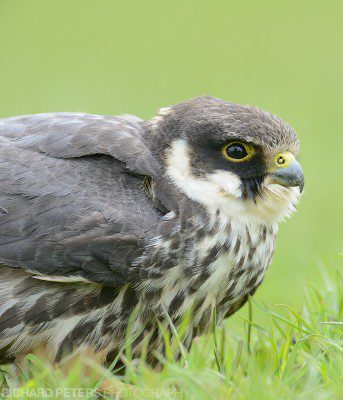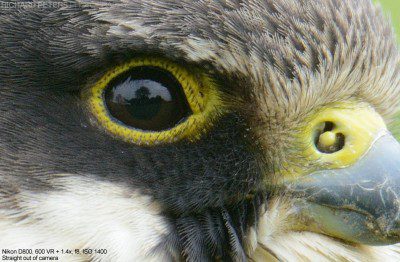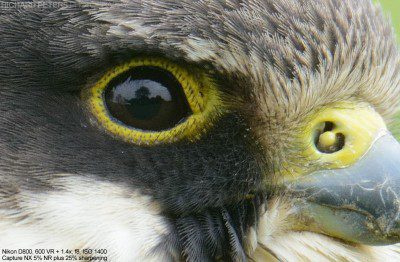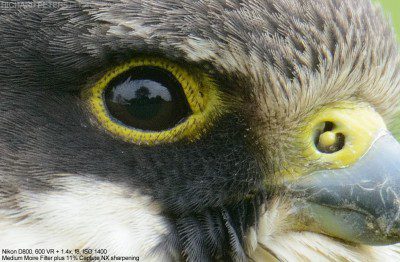I’ve had a few comments over email and twitter about my thoughts on the D800, especially for wildlife, and it’s performance with the 600 VR. However, I’ve not used it much yet, but I did do a quick test shot the other day so thought I’d share it ahead of more detailed thoughts once I’ve used the camera more in real world situations. Below you’ll find a couple of 100% crops and some full resolution downloads of TIFF files converted straight from the D800 RAW. Apologies if it’s a little basic in information for now but it’s just a first look and very initial impressions. I’m still getting to grips with the Nikon D4, but will turn my attention more fully to the D800 soon.

Nikon D800, 600 VR + 1.4x
One thing is for sure, there’s been a lot of discussion and comparison of both this, the regular D800 and the D800E – which is of course the version with the anti-aliasing filter effectively removed. I opted for the regular version in part because although wildlife photography generally shouldn’t provide Moire inducing subjects that can be caused by the D800E, there is a chance. Also, because when I walked in to Terminal 5 at Heathrow Airport duty free and they had a single D800 on the shelf I simply couldn’t believe my luck and figured it’d be crazy not to buy one off the shelf, especially as back orders currently run 300+ deep at some retailers!
ABOUT THE TEST SHOT
Nothing scientific here folks. The photo was taken on a cloudy but relatively bright afternoon, with the 600VR and 1.4x teleconverter, ISO 1400, f8 and 1/800s. It’s a lens combo I use a lot so wanted to start the process of satisfying my own curiosity of how well this new high resolution camera would perform with this set-up. Shutter speed was roughly equal to focal length to aid with sharpness. Other than sharpening etc, these images have had no processing in terms of levels, contrast etc. Something I should point out, is that I had to set -12 in focus fine tune to consistently get the depth of field in the right place.
So you’ve seen the test image above, downsized for the web. I’ve cropped off the right hand side as I framed the head square in the middle of the frame to try and get the optimal quality from the optics. So the right hand side was nothing more than green mush.
IN MORE DETAIL
Below are several 100% crops and they are quiet large so when they open in the pop up window, you may need to click on them and drag them around to see all of it depending on your screen res.
The first crop shows the file straight out the camera. Notice how there is some odd colouring in the dark feather detail under the eye (it’s actually elsewhere in other parts of the image too in dark feather areas). I know this isn’t a D800E but my very first reaction was ‘what? Moire, in an E-less D800? What’s that all about!’. Of course, moire can crop up in camera even with an anti-aliasing filter but the problem here is I’d been all consumed by the ‘looking for moire obsession fever’ that has been sweeping the internet since these cameras appeared. Thankfully, a more sensible thought came over me, that it’s just noise from shooting the photo at ISO 1400.

Crop of untouched RAW
Next, I ran some very minor noise reduction over the image in Capture NX at a setting off 11%. Not something I usually do to be honest, and if I do use Noise Reduction it’s usually in Photoshop and only on the background, not the subject. But the colouring under the eye was bugging me so I thought I’d remove it at the RAW stage for this test. I also applied some sharpening.

100% crop with noise reduction and sharpening
Not bad, better than before but I don’t like the way noise reduction softens detail, and then requires more aggressive sharpening. It’s why I rarely use it. So next I turned the noise reduction back off and tried to run the Moire Filter in Capture NX instead, at medium setting. Just for fun. The result however, was much more pleasing to my eye than using noise reduction as it didn’t soften the image anywhere near as much, but did just as good a job at removing the unwanted colour. You can see from the 100% crop that the with lower sharpening settings than the image with Noise Reduction, the Moire Filtered image is far sharper.

100% crop with Moire Filter and sharpening
Something to point out, is that the Moire Filter desaturates the whole image more than Noise Reduction. It’s fairly subtle, but comparing the images side by side you can see, especially in the beak.
At this stage, I am finding the quality not too bad in general with this lens and converter setup, but once I have taken more photos in varied conditions I’ll have a batter idea of if this particular sample is a good general representation of the quality that I can expect. One thing that is obvious is the very fine feather detail directly under the eye is pretty much lost in all these images. It is very fine detail there though so at the distance from subject vs size of the subject, plus the higher ISO and teleconverter it’s hard to know just how well this would look under better conditions or alongside the same shot with the D800E. But again, this is real world, and in this example it’s a bit mushy.
THE BIG PICTURE
For those that like to see the bigger picture and to make it easier to compare these side by side, here are downloads of full resolution TIFF conversions from the various images above allowing you to see things in more detail. The height of these is full frame out of the camera but of course the crop is square as per the image at the top of the page. You’re still looking at TIFFS that are 4912 x 4211 in size though. If you want to resize these to the resolution of your current camera, the resize the image based on the height, not the width as that has been cropped.
TIME WILL TELL
So there we are, that’s my very basic first look at the D800 and how it performs with my favourite lens and teleconverter. I need to spend more time using this camera to get a better feel for it’s image quality characteristics, and how well it performs with my usual lenses, before I paint a more informed picture. So far, although I know the D800E will produce a sharper image, once you apply a little sharpening to the D800 the results do improve, and I’m not sure I want to run the risk of having that one in a thousand shot ruined by Moire be the one that could have been destined for great things. Autofocus with this setup so far seems very good, but then it shares the same focus abilities as the D4 so I expect nothing else. Also, I’m very pleased with the ISO performance based on the few images I’ve taken so far, with this one at ISO 1400 being very clean – although it wasn’t truly a low light situation.
So far, I don’t regret getting the regular D800 over the D800E but the thing I have to remember, is that up until recently I’ve ‘got by’ with 12mp cameras with anti-aliasing filters. They were more than capable of printing images at 5 feet and over, which look good even up close. I never complained about softness then, so I don’t see why I should start doing so now with a 36mp camera, E or no E!
Time will tell, but I do think I’m going to like the D800!
ABOUT THE SUBJECT
As a little back story to the subject of this test. We were alerted to this Hobby a few days ago and when we found him, didn’t even have the strength to stand up and we were told had spent the whole morning sat in one spot sheltering near some trees. He made no attempt whatsoever to move when approached and really didn’t look very good at all. However, despite being very weak, he was taken in to appropriate care where he was fed up to regain strength and not long after released, so a great end to the story and far more important than some silly blog post about a camera! 🙂
WHERE TO BUY THE D800 OR D800E?
Well, that is the big question as at the time or writing this these cameras are very hard to get hold of and back ordered all over the place. They are trickling in though so you might want to try your luck at Clifton Cameras or Wex Photographic (formerly Warehouseexpress.com).
As ever, those in the USA can keep an eye on B&H Photo Video.








